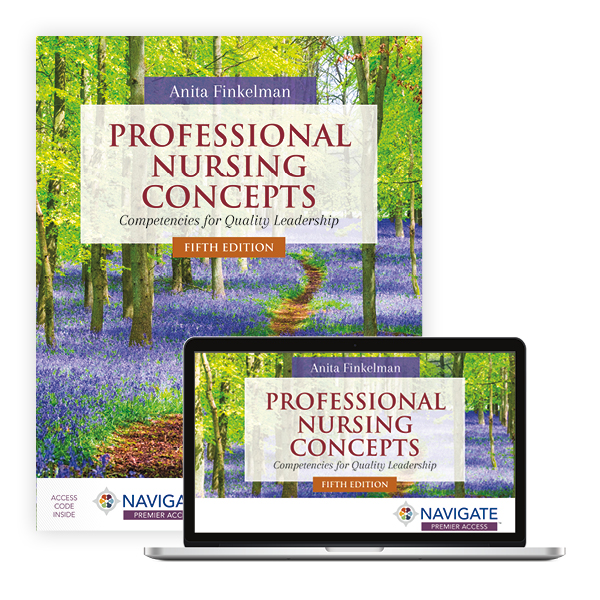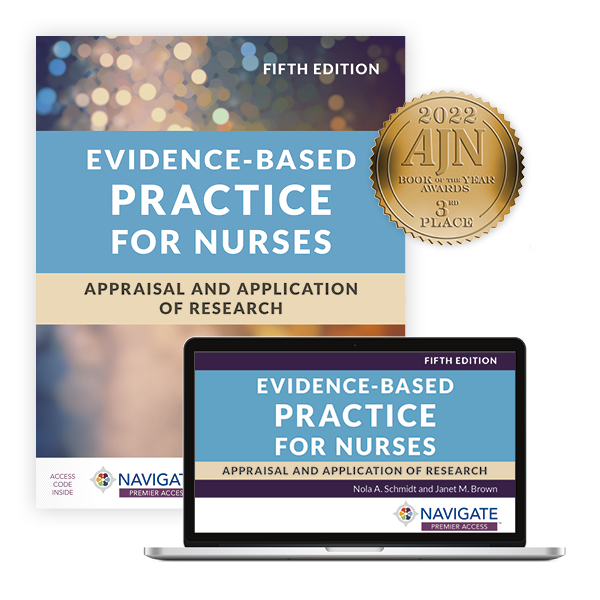A Guide to Teaching Nursing Theories

Nursing theories help define and guide nursing practice, providing a foundation for clinical decision-making. These theories, or frameworks, also offer a systemic approach to developing key procedures that promote quality patient care.
Read on for a closer look at nursing theories used in modern healthcare—from the Environmental Theory and Tidal Model to the Theory of Comfort, the Nursing Need Theory, and Casey’s Model of Nursing—to explore how educators can empower the next generation of competent and compassionate nursing professionals.
The Value of Nursing Theories
Nursing theories offer a structured foundation for both nursing students and professionals. As the field evolves, nursing theories play a crucial role in:
- Shaping, evaluating, and assessing the quality of patient care
- Providing rationale for healthcare decisions
- Ensuring the use of best practices
- Helping nursing learners understand their purpose and role in a healthcare setting
- Encouraging nursing professionals to stay up-to-date with the latest advancements in their line of work
Looking at the Nursing Metaparadigm
A metaparadigm in nursing encompasses a set of fundamental concepts that outline the framework for how the healthcare discipline should operate. This revolves explicitly around four primary concepts:
- Person: The individual receiving health care services, including their physical, psychological, and social needs.
- Health: The overall well-being and quality of life of the patient—ranging from illness to optimal health.
- Environment: Surrounding context and external factors influencing the individual’s health and healthcare experience.
The Most Common Nursing Theories for Educators to Know
A handful of theories have been around for hundreds of years in public health, while new ones continue to emerge and deliver valuable insights for nursing professionals.
Here are some of the most common ones used in today’s hospitals and healthcare settings:
Casey’s Model of Nursing
Anne Casey’s Model of Nursing, developed in 1988, is an early nursing theory for child health nursing. This emphasizes a collaborative approach between nurses, children, and their families.
The theory highlights the belief that family members care for their children best with the assistance of healthcare professionals.
Environmental Theory
Florence Nightingale, the first nursing theorist and founder of modern nursing, developed the Environmental Theory during the Crimean War in 1860. Amidst the conflict, Nightingale discovered a connection between a patient's environment and recovery and health.
This concept identifies five key environmental factors—pure water, fresh air, efficient drainage, cleanliness, and sunlight—as essential elements in human health.
Theory of Comfort
Conceived by Katharine Kolcaba in the 1990s, the Theory of Comfort focuses on providing comfort as the primary goal in nursing care. Kolcaba outlines comfort in three stages: relief, ease, and transcendence. Once a nurse meets a patient’s comfortability needs, they experience relief, which is the first step in achieving transcendence.
Tidal Model
The ideas of nurse and psychotherapist Phil Baker spurred the emergence of the Tidal Model in the 1990s. Widely used in mental health nursing and psychiatry, this framework focuses on fundamental care, emphasizing empathetic human connections in moments of distress. The approach draws on the Ten Commitments to patients, including:
- Valuing their voice and experiences
- Respecting their language
- Developing a genuine curiosity about their situation
- Leveraging the lens of an apprentice
- Using all available resources to help
- Providing next steps
- Giving the gift of time
- Utilizing personal insights and wisdom
- Understanding that change is constant
- Remaining transparent throughout the process
Nursing Need Theory
The works of Virginia Henderson led to the development of the Nursing Need Theory in 1955. This centers on fulfilling patients’ basic needs while promoting their independence during hospitalization. By addressing these needs proactively, nurses aim to reduce unnecessary hospital stays and facilitate prompt recovery for patients.
Emerging Trends in Nursing Theory Education
When teaching nursing theories, it is critical to recognize that nursing education constantly evolves. Because of the dynamic nature of the healthcare industry and advancements in patient care, instructors must stay updated on emerging trends in nursing theory education. This is key to equip students with the most relevant, practical knowledge and skills for their future nursing profession.
Consider the following trends:
Utilizing Technology for Support
Nurse educators incorporate digital solutions into nursing theory education, including online platforms, interactive simulations, and virtual reality (VR). Research from Elsevier demonstrates how these integrations enhance learner engagement through gamification of learning, simulation, and immersive virtual experiences. Technology enables remote and scalable education and training, providing increased flexibility.
Emphasizing Critical Thinking and Decision-Making Skills
The National Council Licensure Examination (NCLEX) has set the standard for licensing nurses in the United States, Canada, and Australia since 1982. However, the Next Generation NCLEX (NGN) exam, implemented On April 1st, 2023, introduces new item types, question formats, and clinical judgment updates. Nurse educators are adapting their programs to emphasize critical thinking and application in clinical settings.
To better prepare students, instructors teach the NCSBN Clinical Judgement Model, incorporate case studies, and prioritize clinical reasoning in lesson planning.
Professional Nursing Concepts: Competencies for Quality Leadership, Fifth Edition
Professional Nursing Concepts: Competencies for Quality Leadership, Fifth Edition is an ideal resource for guiding students' transition from classroom to practice. The text fosters dynamic interactions and learning experiences through case studies, practice questions, and engaging activities like Clinical Reasoning and Judgment, Collaborative learning, and role-playing exercises.
Request Your Digital Review Copy
Adopting Interdisciplinary Approaches
Instructors are introducing interdisciplinary approaches to teaching nursing theory to foster collaboration between nursing and other healthcare disciplines. This method emphasizes incorporating knowledge from diverse fields into a nursing program, empowering students to gain a more comprehensive understanding of healthcare delivery.
By integrating information from basic medical knowledge and nursing concepts to ethical considerations and interprofessional collaboration, nursing students appreciate the interconnectedness of patient care and develop a broader perspective that prepares them to deliver holistic services.
Highlighting Experiential Learning and the Practical Application of Theories
There is a growing emphasis on experiential learning and the practical application of nursing theories in modern nursing education. Instructors encourage using hands-on activities, case studies, and real-world scenarios in conjunction with traditional classroom learning to bridge the gap between theory and nursing practice. Exercises such as simulation labs, clinical placements, role-playing, and critical incident analysis help students actively engage in critical reasoning and foster a deeper understanding of core nursing concepts.
Effective Strategies for Teaching Nursing Theories and Empowering Students
In nursing theory education, effective teaching strategies are crucial to engage, motivate, and empower nursing students actively. This fosters a dynamic learning environment that nurtures competent and skilled future nursing professionals.
Here are four best practices instructors are introducing in their nursing program:
- Create a Supportive, High-Quality Learning Environment - Learning Environments Research indicates that high-quality learning environments correlate to outcomes such as increased satisfaction and motivation, higher academic performance, emotional well-being, better career results, and less stress and burnout.
Instructors create a supportive educational space by establishing an inclusive classroom that promotes open communication, active participation, and respectful discussion. Within this approach, program leaders encourage students to collaborate, share experiences, and support their peers throughout the program.
- Leverage Diverse Instructional Methods - Utilize diverse and unique instructional techniques to cater to diverse learning styles and engage learners successfully. Nurse educators can combine traditional lectures with interactive activities, group discussions, hands-on simulations, and educational technology to ensure that nursing students are actively involved in learning.
Top technology trends shaping nursing instruction include telehealth and telemedicine, mobile health apps, escape room technology, and virtual and augmented reality. Program leaders can integrate these strategies into their lesson planning to effectively prepare students for their clinical experiences and beyond.
-
Integrate Real-World Examples and Practical Application - Incorporate practical examples and applications to demonstrate the relevance of nursing theories in clinical practice. Strengthen learners’ analytical and problem-solving abilities by utilizing patient scenarios, simulation labs, clinical observation and reflection, and healthcare professional guest speakers.
-
Provide Ongoing Feedback and Support - Throughout nursing students’ learning journey, ensure you provide regular feedback and continuous support. Offer constructive comments on assignments, exams, and class participation in combination with interactive classroom activities, office hours, simulation assessments, and individual conferences. This facilitates persistent improvement and upskilling.
Evidence-Based Practice for Nurses: Appraisal and Application of Research, Fifth Edition
Evidence-Based Practice for Nurses: Appraisal and Application of Research, Fifth Edition is an essential resource for teaching students how to translate research into practice. The authors employ a fresh and updated approach to teaching nursing research using evidence-based practice. This text is incredibly inclusive and a terrific fit for undergraduate classrooms.
Request Your Review Copy
How Comprehensive Resources Transform Nursing Instruction
Valuable training resources support effective nursing theory education and training experiences. Leveraging reliable and comprehensive instructional assets authored by experts and leaders in nursing ensures alignment with the latest nursing theories and educational practices. Jones & Bartlett Learning resources equip nursing instructors with the necessary tools, materials, and guidance to encourage student engagement and meaningful learning.
Related Content: